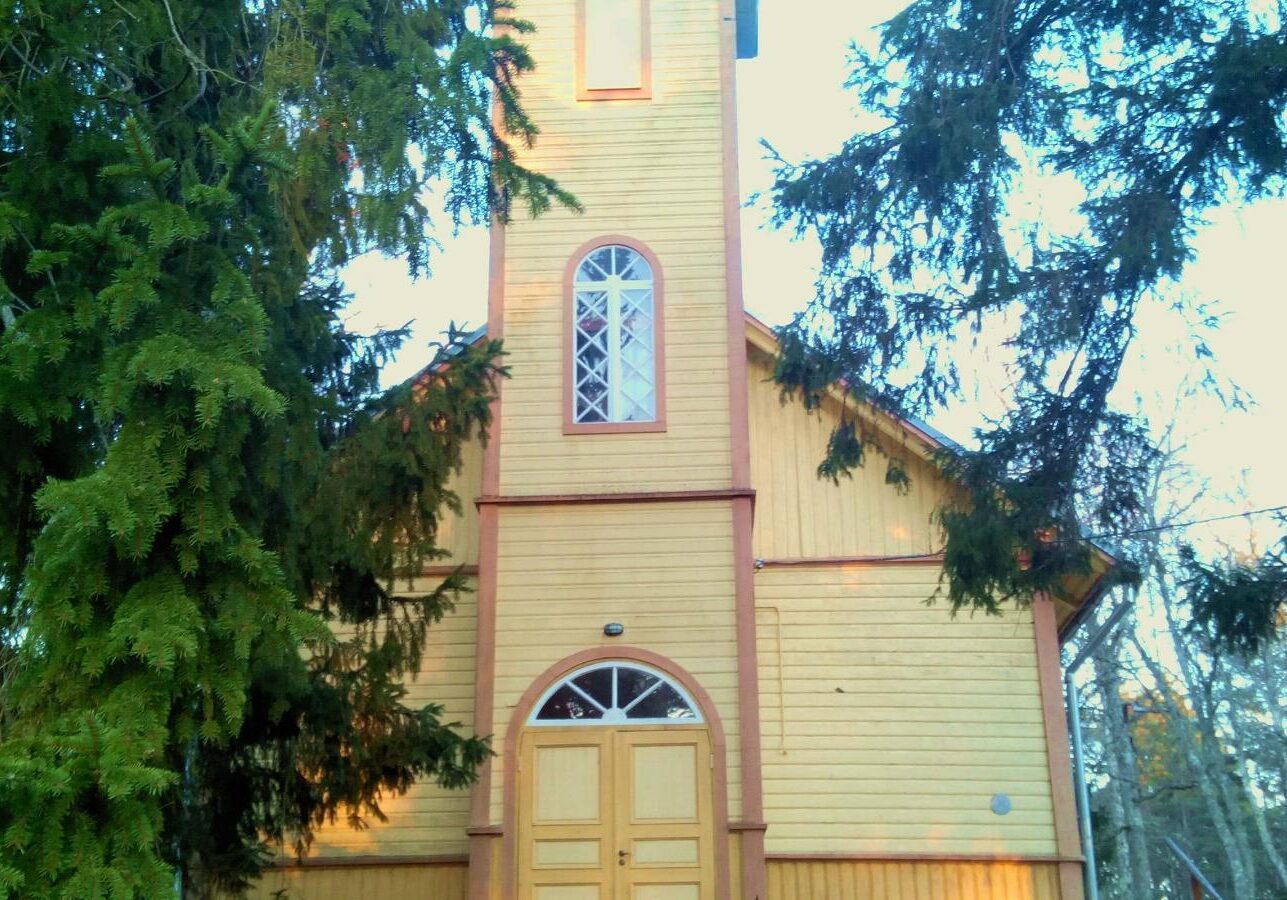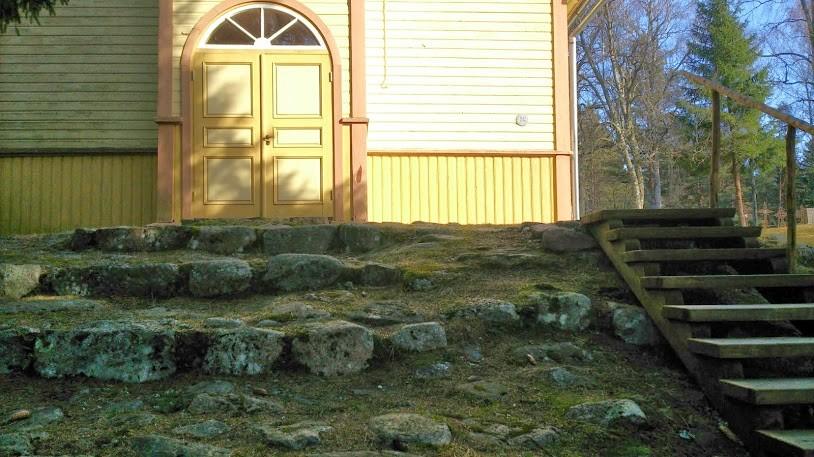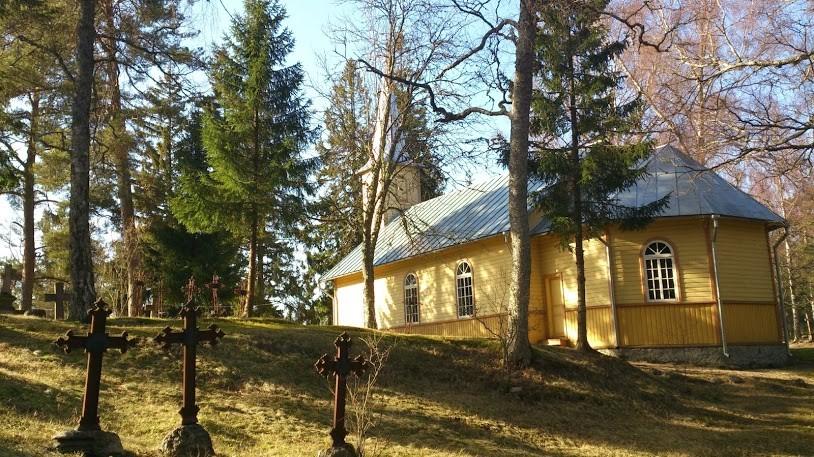Mänspäe Chapel

The first chapel was erected in thanks to God by Danish seamen, who had escaped from a shipwreck on the Mänspäe coast. The chapel was built from the pieces of the shipwreck and is said to have had room for only 10 people. In the first half of the 19th century, one of the first “reading schools” in the area operated in the chapel. The present Mänspäe Chapel – the third at this location – was built by the Emmaste Manor lord, Baron Hoiningen-Huene based on a plan designed in 1908. The builder was master builder Toomas Koolmeister. In 2006, the chapel received a new coat of paint, which is exactly the same shade of yellow as when the chapel was built a century ago.
In about 1690, so the tale goes, a ship ran upon the rocks nearby but the crew reached the land safely. In token of their gratitude towards superior powers for being saved, a chapel was erected to the place of salvation. Initially, the chapel of Mänspäe belonged to Käina parish. After Emmaste church was built in 1866, Emmaste parish, the fourth and newest in Hiiumaa, was formed.
By the beginning of the 20th century, the chapel was in such state of decay that a new one had to be built. The present Mänspäe church was built as a subordinate church to Emmaste church and was consecrated on 26 October 1908.
The tight relation of the people of Emmaste with the sea is vividly demonstrated by the great number of seamen and ship owners who have been buried in Mänspäe graveyard and whose tombstones often have an anchor or a ship as an element of design.
Many distinguished figures of education and culture have found their final resting place in Mänspäe Cemetery. Those elderly patients of Tohvri nursing home who have no family are also laid to rest in Mänspäe graveyard. There is a memorial stone for fourteen villagers who were murdered on 12 October 1941 by the Soviet Army retreating from German landing troops.
Gallery
It is a waypoint on the journey
You might also be interested in:


